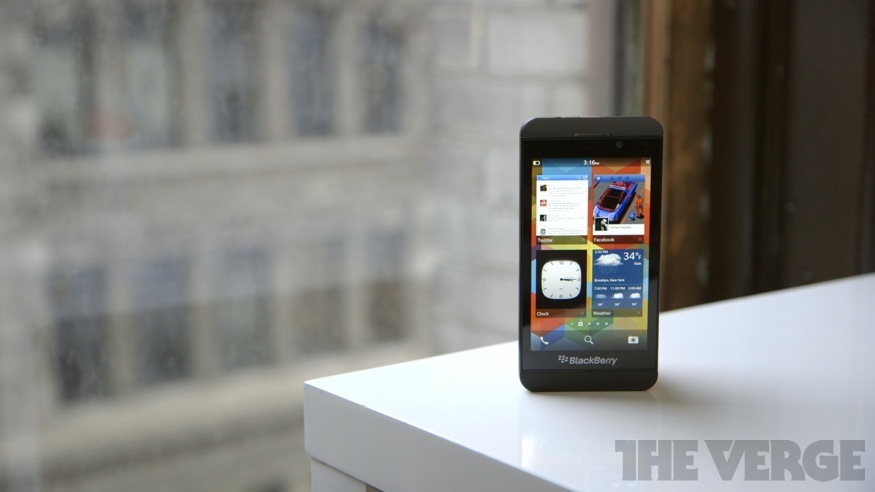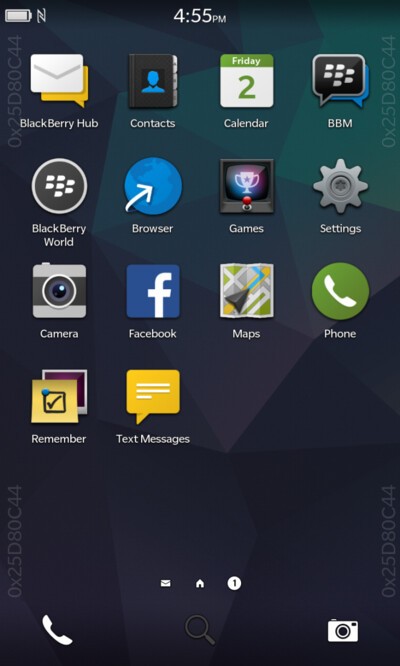The mobile world is dominated by iOS and Android, you cannot go out in public without seeing someone using a device running these two operating systems. Every once in a while you see someone rocking a device using something else, it is like seeing a unicorn. On the rare occasion that you see someone using a Windows Phone device or a Blackberry device you often wonder what they were thinking when they decided to choose the underdog rather than one of the more dominant platforms. Living in Canada I typically run into the later far more often than the former and it makes me smile knowing that they are supporting a great Canadian brand. Blackberry (formerly RIM) has finally awoken to the importance of touch screen devices and has created a fantastic new OS in BB10.
Blackberry was very slow to change when it was managed under the founders and this caused them to lose massive amounts of market share. The once ubiquitous Blackberry brand has fallen and is teetering on the precipice of obscurity, but they still have some tricks up their sleeves. In 2010 Blackberry purchased the QNX Software Systems company which gave them control of the QNX operating system. This system utilizes microkernel architecture which allows it to continue to operate even if one part of the OS crashes or selectively using only one part of the OS as required. The microkernel architecture makes the OS extremely flexible and reliable which is why it is used heavily in manufacturing, air traffic control, shipping navigation systems and many more systems that would be disastrous if they crashed. The QNX software also gave Blackberry the tools required to create a brand new mobile OS to power them into the future rather than relying on the decade old OS that had been powering the brand previously. The first demonstration of QNX on a mobile devices was launched on the Blackberry Playbook, a powerful but ill-received tablet that allowed for true multitasking and a new impressive experience for Blackberry users. Eventually Blackberry made the decision to switch their mobile phones over to the QNX based OS branding it Blackberry 10 (BB10 for short). After a few delays they were able to launch the OS on the Z10 in 2013 to promising reviews. The hardware of the Z10 and the subsequent Q10 were generally favourable and reviewers liked the software, the major limitations were based on the lack of applications that were being produced for the platform in light of the iOS app store and Google Play on Android. Some Blackberry loyalists were thrown off by BB10 as well seeing some parts of the old Blackberry OS fall by the wayside and changing their workflows. Since the launch Blackberry has been making substantial improvements to BB10 and has been listening to their customers criticisms returning some of the great features from the old platform into BB10.
 Now they are getting ready to release their third major revision of the OS since launch just over a year ago with version 10.3 of BB10. This release not only adds more functionality but is giving the OS a bit of a UI overhaul to bring it more in line with the other major operating systems. They have eliminated the ugly rectangular boxes around app icons and given them a clean new look, revamping some the first party icons to a flatter design that is all over the mobile industry these days and allowing for more icons to appear on the screen at one time. They have created a persistent home screen that previously only appeared when there were apps running in it.
Now they are getting ready to release their third major revision of the OS since launch just over a year ago with version 10.3 of BB10. This release not only adds more functionality but is giving the OS a bit of a UI overhaul to bring it more in line with the other major operating systems. They have eliminated the ugly rectangular boxes around app icons and given them a clean new look, revamping some the first party icons to a flatter design that is all over the mobile industry these days and allowing for more icons to appear on the screen at one time. They have created a persistent home screen that previously only appeared when there were apps running in it.
There is a new 'Signature Action' button in applications that emphasizes the main use of the app by creating a large target for the user to hit. The update also brings along unlimited folder sizes. A big usability update is access to the quick settings menu from any screen by dragging down from the top.

Blackberry is clearly attempting to meet current market demands and is starting to emerge from the initial growing pains of a new OS. They luckily have the dominant mobile OS manufacturers to look to for inspiration and they have hopefully learned from their past mistakes. The usability of BB10 is fantastic, swiping around the OS feels fast and really like you are using software from the future. I would love to be able to use this platform as my personal every day device however there are features of Android that I just can't live without. If Blackberry were to enter into an agreement with Google to allow for the use of the Google Play store and the accompanying services frameworks I would switch in a second. Blackberry is certainly in the shadows right now but they seem to be headed into the light, I hope that they can continue to move quickly and improve so that some day we can have another thriving ecosystem to battle Android and iOS.
Update:
There is also an update to the Android Runtime in the 10.3 update that will allow for Android apps up to the 4.3 level to work. It also allows for access to Bluetooth LE, NFC, and better account support.
Update:
There is also an update to the Android Runtime in the 10.3 update that will allow for Android apps up to the 4.3 level to work. It also allows for access to Bluetooth LE, NFC, and better account support.




No comments:
Post a Comment